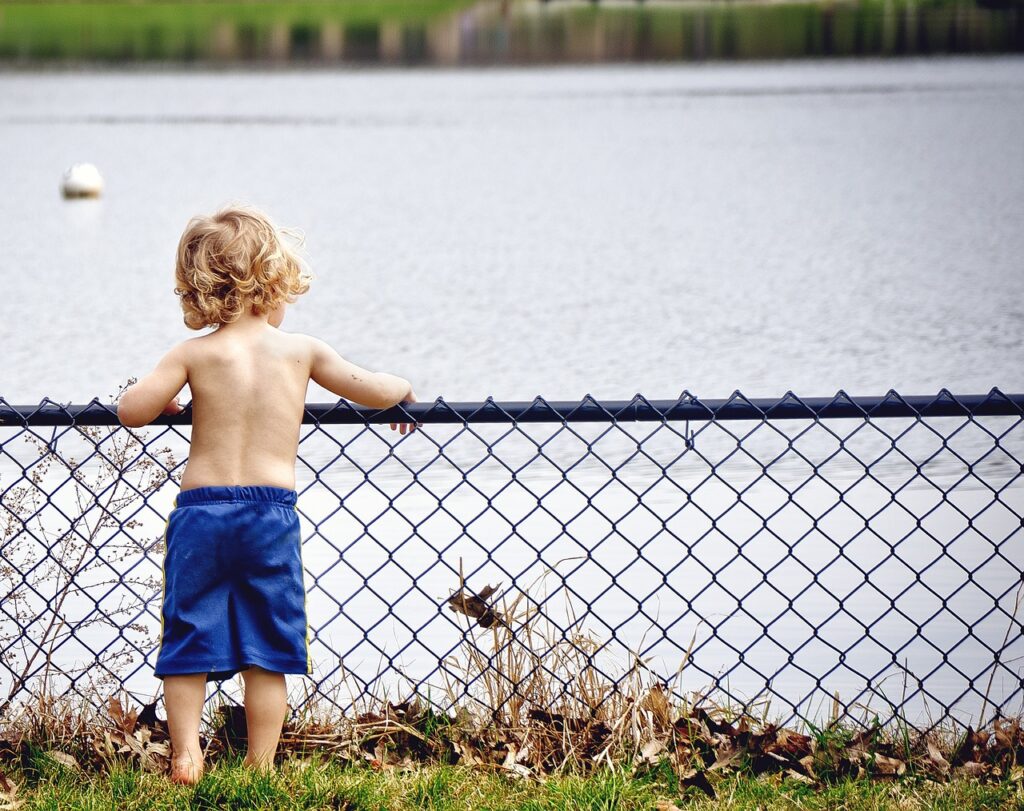
Keeping Our Loved Ones Safe: Preventive Measures and Resources for Autism Safety
Ensuring the safety of your loved ones is a top priority, especially when it comes to children with autism. One of the most pressing concerns is the risk of elopement – when a child wanders away from a safe environment. This can lead to dangerous situations, particularly near bodies of water, where the risk of drowning significantly increases.
As a mother who has personally experienced the heart-stopping fear of losing sight of her daughter to elopement, I understand all too well the unique challenges that come with keeping our children safe. The moment I realized my daughter had wandered away, my heart sank, and a surge of panic took over. This profound fear is one that many parents of children with autism face, as the risk of elopement is ever-present.
I want to extend my heartfelt condolences to the families who have suffered the unimaginable tragedy of losing a child to drowning. These losses remind us of the critical need for vigilance and proactive measures to protect our children. It is with deep empathy and a shared commitment to safety that I present this guide.
In this blog post, we will delve into practical strategies and resources designed to prevent elopement and enhance safety around bodies of water. Together, as a community of caring parents and advocates, we can work towards a safer environment for all our loved ones, especially those with special needs.
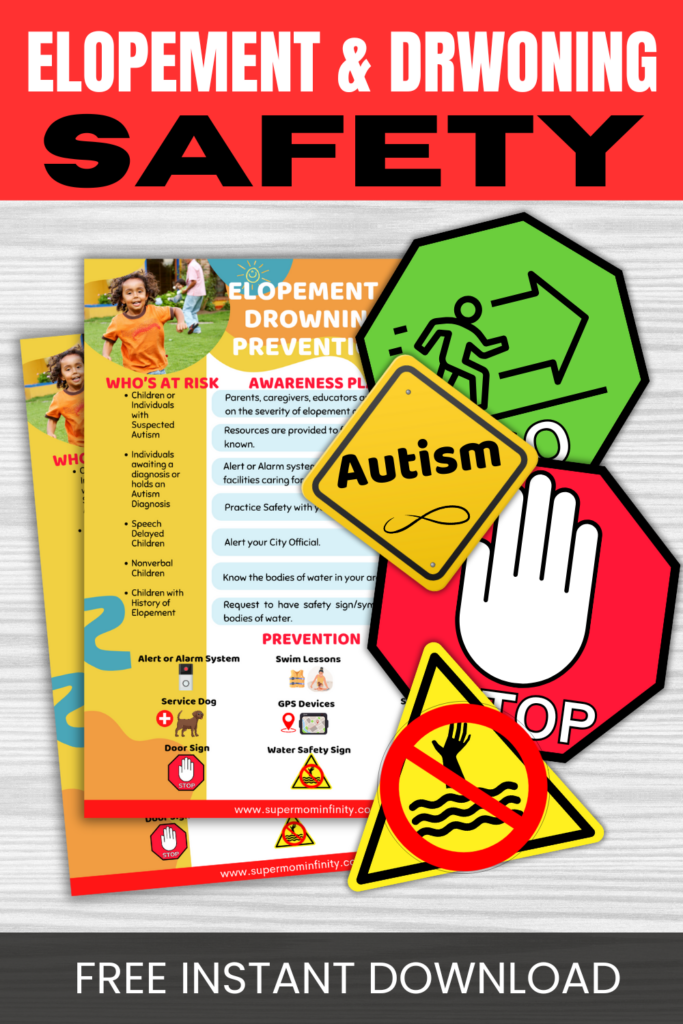
How can families enhance drowning prevention measures for children with autism?
Families can enhance drowning prevention measures by installing barriers around pools, teaching swimming skills, ensuring constant supervision near water, and having safety equipment readily accessible. It’s also important to educate children about water safety in a way that resonates with their understanding.
What role do caregivers play in ensuring the safety of children with autism?
Caregivers play a crucial role in ensuring the safety of children with autism by being proactive in identifying potential risks, implementing safety measures, and educating themselves and their families about the specific challenges related to elopement and drowning risks. Their vigilance and preparedness can significantly contribute to creating a safer environment.
What is Autism Elopement?
Elopement refers to when a child with autism wanders away from a safe environment, potentially putting themselves at risk. Children are curious, however adding their curiosity to overstimulated, lack of awareness and sensory seeking lead to abrupt eagerness to run which is called elope. Elopement, or wandering, is a common challenge for many families, but by taking proactive steps, we can mitigate risks and create safer environments. Here are some preventive measures and resources designed to help keep your loved ones safe:
Essential Tips to Keep Your Family Safe
By understanding the unique challenges faced by families affected by Autism Elopement and Drowning, we can take proactive steps to create a safer environment for everyone. Join us as we delve into essential tips to safeguard your family and keep your loved ones safe.
Educate Yourself and Others
Understanding the signs of elopement is the first step. Share this knowledge with friends, family, and your community to build a supportive network.
Support Organizations
Consider donating to or volunteering with organizations that advocate for autism safety initiatives. These groups provide essential resources and support.
Advocate for Safety Measures
Encourage local governments to implement safety protocols, such as additional fencing around water bodies and improved tracking technologies.
Engage with Families
Connect with families affected by autism in your community. Offering support and sharing resources can create a strong network of safety and awareness.
Use Identification Tools
Equip your child with medical ID bracelets or GPS tracking devices, invaluable for quick identification and response if they wander off.
Teach Water Safety Skills
Enroll your child in swimming lessons tailored for special needs. Programs like those offered by the YMCA or Autism Speaks can build confidence in water safety.
Supervised Outdoor Time
Always supervise children when they are outside, especially near water, to prevent accidental wandering.
Social Stories and Visual Aids
Teach children about safety through social stories and visual aids, emphasizing the dangers of wandering.
Community Awareness
Inform neighbors and local law enforcement about your child’s tendencies. Many communities offer autism alert programs to assist first responders.
Utilize Technology
Use apps and devices that alert you if your child leaves a designated area, providing peace of mind and immediate response capabilities.
Alert or Alarm Systems
Install alarms on doors and windows to alert caregivers of unexpected exits.
Secure Locks and Fencing
High fences and secure locks can help prevent wandering from home.
Door Signage
Visual cues on exit doors can remind everyone to stay vigilant.
Routine and Structure
Establishing a consistent daily routine reduces anxiety and the likelihood of elopement by providing security and predictability.
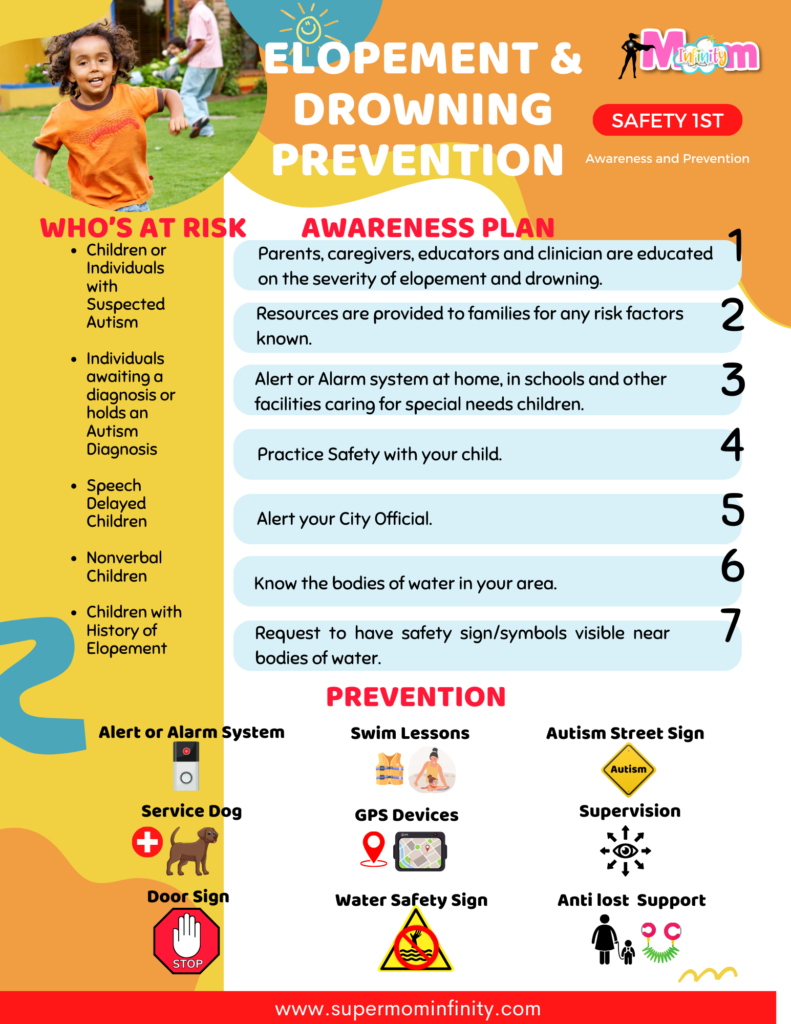
Free Elopement and drowning Prevention Resources
Are you a parent or caregiver of a child with autism or special needs? Ensuring their safety is your top priority, and we’re here to help. Our Free Elopement and Drowning Prevention Guide and Signage is designed to equip you with essential strategies and resources to protect your child. Together we can make a difference. Download your free guide today and share it with a friend!
Free Safety Guide and Signage
We are pleased to offer a Free Safety Guide and a collection of Downloadable Safety Signs. These resources have been thoughtfully developed to assist you in teaching your child the vital skills needed to recognize and avoid hazardous situations.
Understanding the Importance of Safety Education
While the signs may reveal sensitive information, they play a crucial role in helping your child learn to identify risks and respond appropriately. Your ongoing support and patient guidance are essential in ensuring your child understands the significance of each sign, fostering their ability to navigate safely in various environments.
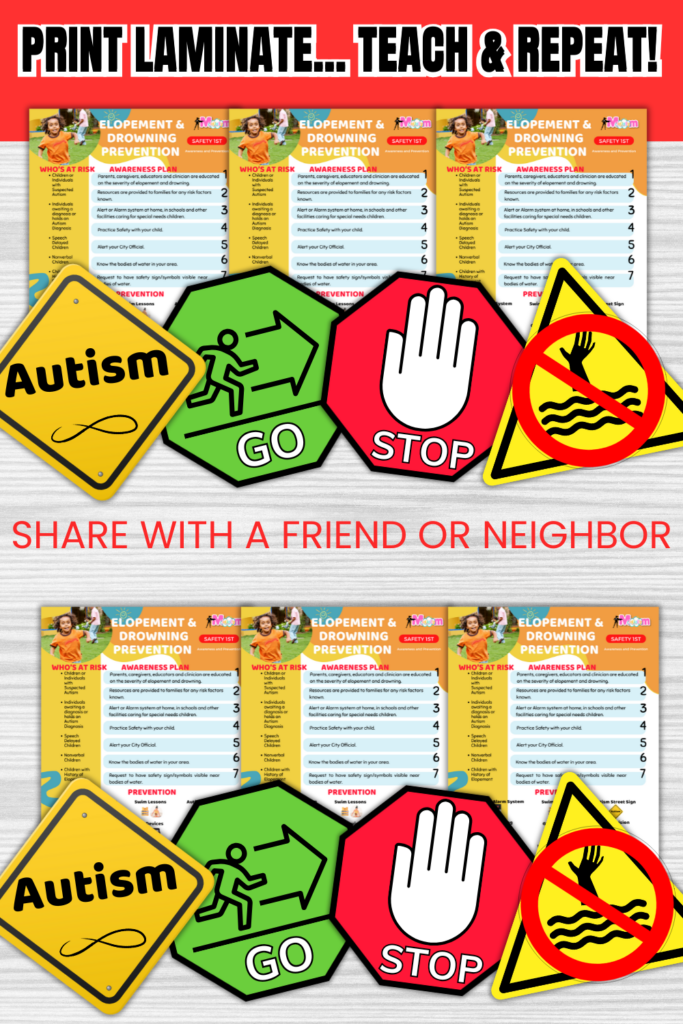
Safety Resources for Wandering, Elopement & Drowning Prevention
Here are some great resources you can use to prevent and protect your child from Elopement and Wondering.
National Autism Association’s Big Red Safety Box
This free resource offers tools and information to help prevent wandering. Apply and receive a Red Box with informative and Signages.
Autism Speaks Safety Toolkit
Provides safety tips and resources for families, including a section on water safety. Download yours here.
SafeKids Worldwide
Offers comprehensive safety guidelines for parents of children with special needs.
AngelSense GPS Tracker
A wearable GPS tracking device specifically for children with autism, offering real-time location updates.
AngelSense On Amazon
The tracking devices is also sold on Amazon. Please read subscription information and service plan.
Project Lifesaver
Provides a personalized radio transmitter to locate individuals who may wander, working closely with law enforcement.
Jiobit Smart Tag
A small, durable GPS tracker for clothing or shoes, offering real-time location data.
Life360 Family Locator
A mobile app for real-time location tracking, with alerts for arrivals and departures.
Ring Video Doorbell
A security camera system to monitor exits and prevent elopement.
SmartThings Motion Sensor
Integrates with smart home systems to alert you to movement, enhancing monitoring capabilities.
PocketFinder GPS Locator:
A compact GPS device with customizable alerts for wandering.
Tile Mate
A Bluetooth tracker for locating personal items or tracking activities.
Association of Science in Autism Treatment
Tons of addition resoures and preventive items for individuals with Autism
The Resources provided are all great starts to include in your daily schedule, teaching and training, Children with special needs and Autism is a process. Stay positive, consistent and remember repetition is key for retaining this pertinent information.
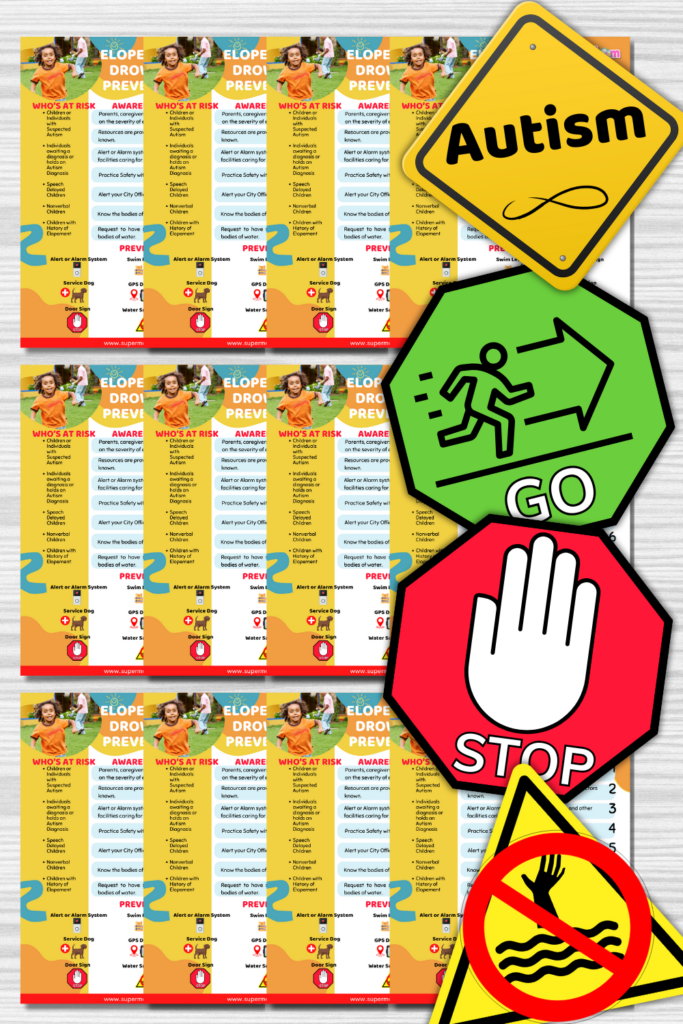
Let’s Spread the Awareness Together: Download and Share!
By spreading awareness and empowering each other with these resources, we can protect and support our community. Please share this post to reach more families who might benefit from this information.
Together, we can make a difference. elopement is a critical safety issue for children with autism, often leading to risky situations due to their unique challenges in understanding dangers. The heightened risk of incidents, particularly drowning, necessitates proactive measures from caregivers and families. By implementing strategies such as secure environments, GPS tracking, and effective communication, caregivers can significantly reduce the likelihood of elopement.
Additionally, enhancing drowning prevention measures through education, supervision, and safety equipment is essential. Ultimately, the commitment and awareness of caregivers are vital in safeguarding children with autism, ensuring they can explore their surroundings safely while minimizing potential hazards.
Encouragement and Support
As a parent, your involvement and dedication are key to your child’s safety and development. By utilizing these materials, you are taking proactive steps to prevent incidents such as elopement and drowning, ultimately contributing to a safer and more secure life for your child.
We are honored to support you on this journey, providing the tools and knowledge necessary to protect and empower your child in a world that can sometimes feel overwhelming. Here’s our free Autism Beginner’s Guide as well. It will assist you in understanding the Autism Spectrum within your child. Please reach out if you need further assistance or guidance in utilizing these resources effectively.
